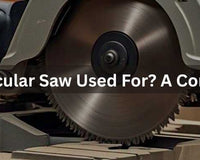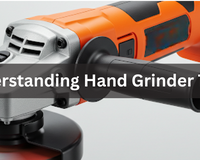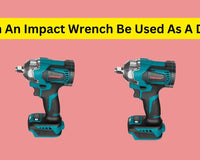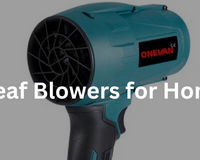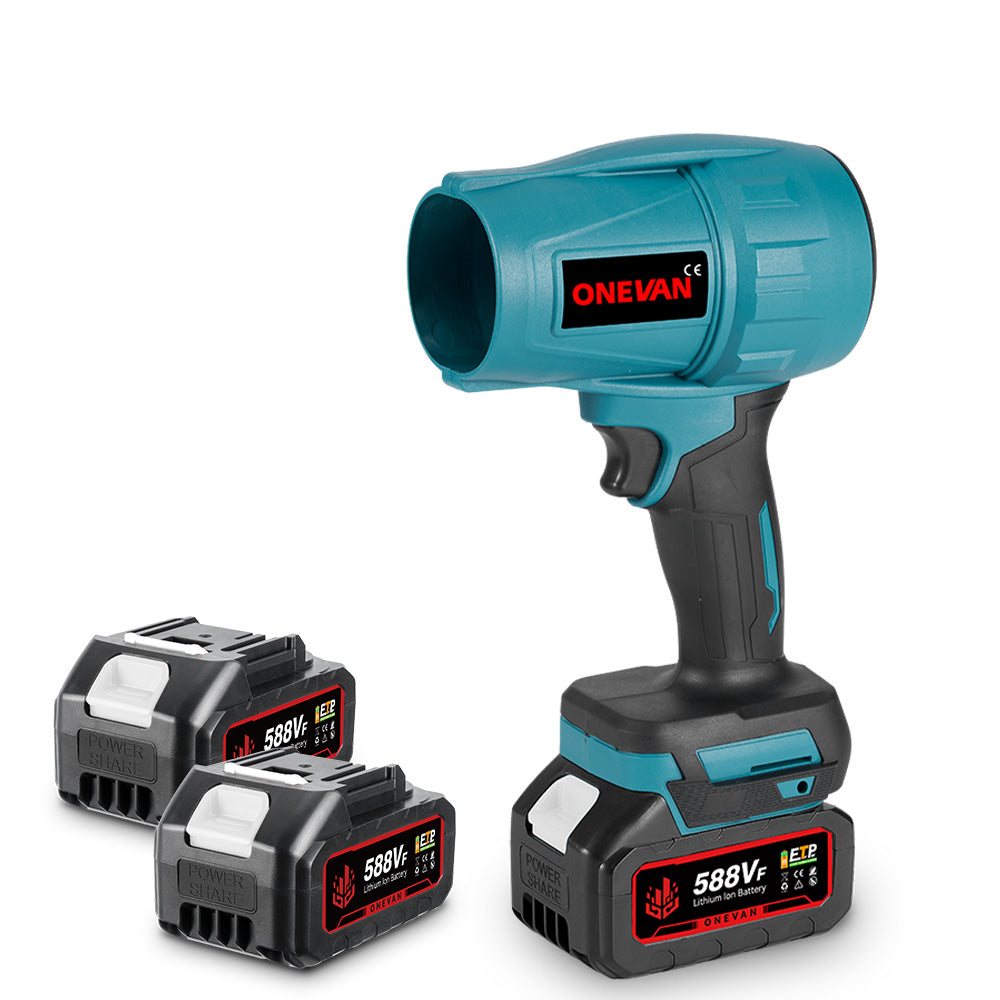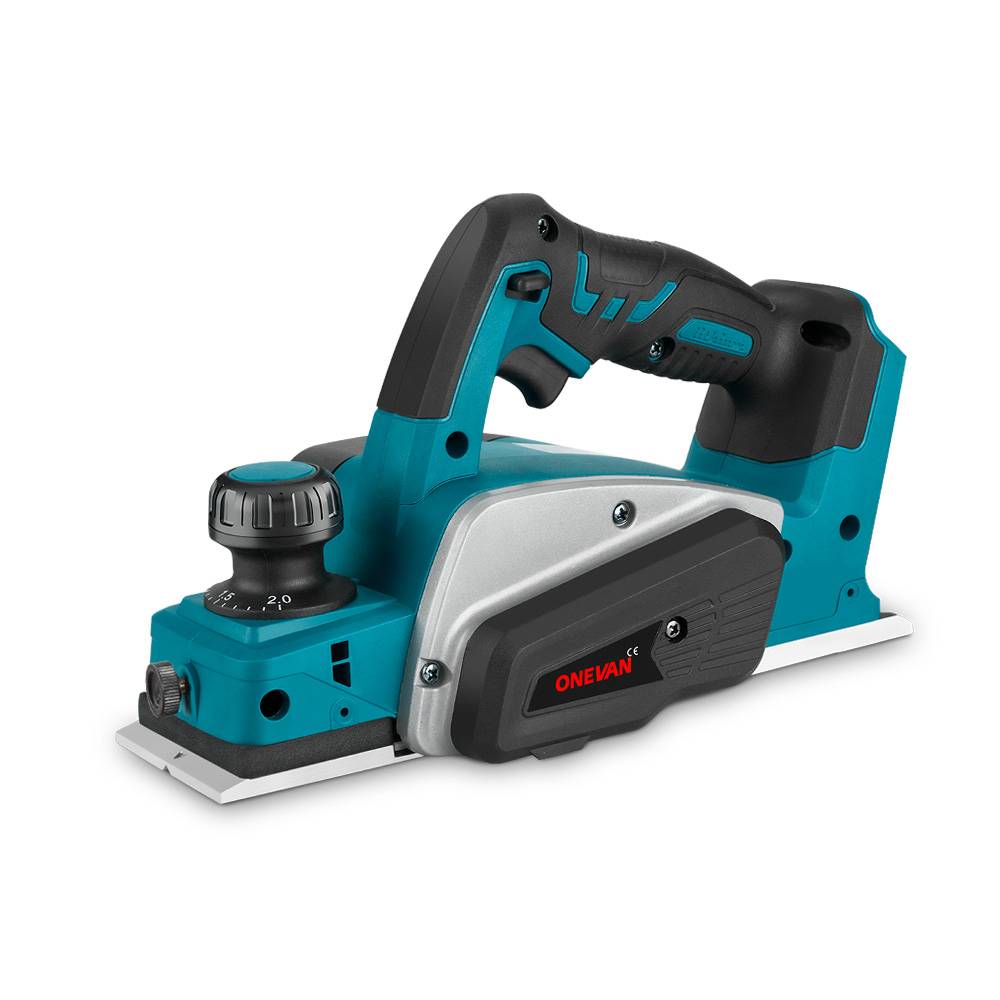Look, if you have machinery with moving components, such as bearings, joints, and fittings that require lubrication, you likely need a grease gun. It should not be an optional activity. For example, regular greasing will help keep everything running smoothly, reduce wear, and save you from expensive repairs down the track. I have seen too many people skip this basic maintenance, only to end up with seized bearings or worn-out equipment that could've lasted years longer with proper lubrication.
Skip greasing for a few months, and you'll find out the hard way. The equipment starts making noise, gets hot, and eventually fails. A $20 tube of grease and 10 minutes of work beats a $500 bearing replacement every time.
1. What is a Grease Gun?
Basic Function of a Grease Gun
A grease gun is basically a pump that forces grease under pressure into machinery through small fittings. Think of it like a caulk gun, but for thick grease instead of sealant. The pressure forces grease into tight spaces where a brush or your finger can't reach.
Grease Fittings (Zerk Fittings) of a Grease Gun
Most equipment uses what's called Zerk fittings - those small, nipple-like fittings that protrude from bearings and joints. They have a spring-loaded ball inside that allows grease in but keeps dirt out. You'll find them on mower deck spindles, trailer hubs, and tractor implements—as well as various machinery that contains lubrication points.
How to Identify Grease Points on Equipment
Check your equipment manual first, but generally look for small metal fittings (usually brass or steel) with a small hole in the centre. They're often located at pivot points, wheel bearings, and anywhere metal moves against metal. Some are obvious, others hide behind guards or in tight spots.
2. Components of a Grease Gun
Barrel Capacity and Materials of a Grease Gun
The barrel holds your grease - usually 14oz cartridges for most grease guns, though some take bulk grease. Steel barrels last longer but weigh more. Aluminium ones are lighter but can crack if dropped. Keep the barrel clean inside - old grease can contaminate new stuff and cause problems.
Coupler Types of a Grease Gun
You've got three main types: push-on, lever, and threaded. Push-on couplers are quick but can slip off under pressure. Lever types lock on tight but take longer to attach. Threaded ones are most secure but slow to use. I prefer lever types for most jobs - they offer a good balance of speed and security.
Head Assembly and Pump Mechanism of a Grease Gun
The main point starts from here. The head assembly creates the pressure that pushes grease through the system. Keep it clean and check the seals regularly. If it's not building pressure, it's usually due to a worn seal or air in the system.
Hose vs Rigid Extension of a Grease Gun
Hoses let you reach awkward spots without contorting yourself. Rigid extensions give you more precise control and won't kink. For most jobs, a flexible hose is the winner - you can grease wheel bearings without having to crawl under the equipment. Just make sure it's rated for grease pressure.
Plunger of a Grease Gun
The plunger creates suction to draw grease from the cartridge and pressure to push it out. If it's not sealing properly, you'll lose pressure and struggle to dispense grease. Replace the plunger seal when it starts leaking - it's usually just an O-ring.

3. Types of Grease Guns
Lever-Actuated Grease Guns
Best for: General workshop use, moderate volume greasing
These are your basic workhorses. One hand holds the grease gun, the other works the lever. It requires some effort, but it provides good control over grease flow. Perfect for weekend warriors and light commercial use.
Pistol-Grip Grease Guns
Best for: Precision work, one-handed operation
Trigger control gives you better grease flow control. Easier to use in tight spaces where you can't swing a lever. A bit more expensive but worth it if you do a lot of greasing.
Cordless Battery-Operated Grease Guns
Best for: Heavy-duty applications, high-volume greasing
Game changers for serious use. No pumping, just pull the trigger. Great for fleet maintenance or when you've got dozens of fittings to grease. Battery life is usually good for several tubes of grease.
Pneumatic Grease Guns
Best for: Industrial settings, continuous use
Connect your air compressor and you're set. Consistent pressure, no hand fatigue. However, be aware that pneumatic grease guns require a suitable air compressor with sufficient capacity to maintain operational pressure. Most workshops stick with manual or battery grease guns unless they're doing heavy commercial work.
Comparison of Several Grease Guns
|
Type |
Effort Required |
Speed |
Cost |
Best Use |
|
Lever Grease Guns |
High |
Moderate |
Low |
General maintenance |
|
Pistol-Grip Grease Guns |
Moderate |
Moderate |
Medium |
Precision work |
|
Low |
High |
High |
High-volume jobs |
|
|
Pneumatic Grease Guns |
Low |
High |
Medium |
Industrial settings |
4. Selecting the Right Grease for Your Equipment
Lithium-Based Grease
The most common type works for general bearings, chassis points, and everyday machinery. Good temperature range, water-resistant. If you're only buying one type of grease, make it a lithium-based multipurpose grease.
Calcium-Based Grease
Better water resistance than lithium, but lower temperature tolerance. Ideal for boat trailers and outdoor equipment that frequently comes into contact with moisture. Not great for high-speed bearings.
Synthetic Grease
Handles extreme temperatures, lasts longer, costs more. Worth it for equipment that runs hot or in harsh conditions. Your average mower typically doesn't require synthetic grease, but industrial equipment may.
Food-Grade Grease
If it comes into contact with food or has the potential to contaminate food processing, you need food-grade grease. More expensive, same application method. Avoid using regular grease when food safety is a concern.
Grease Compatibility Issues
Don’t mix different grease types unless you are sure they are compatible; refer to product integration guides or consult with product manufacturers. For example, lithium-based and calcium-based greases may be incompatible with each other. Some combinations can turn into soup or concrete. When switching grease types, clean out the old stuff first, or you might get surprises.

5. Step-by-Step Guide to Loading a Grease Gun
To load a Grease Gun, we need to do several steps. Please follow the steps below:
Step 1: Personal Protective Equipment (PPE)
Keep a clean towel handy - you should wipe your hands before touching anything else. Some greases contain solvents that can cause skin reactions, especially if you've got cuts or scrapes on your hands. If you're working indoors, crack a window - some grease cartridges have a strong smell when you first open them. Besides, keep a clean towel handy - you should wipe your hands before touching anything else. Some greases contain solvents that can cause skin reactions, especially if you've got cuts or scrapes on your hands. If you're working indoors, crack a window - some grease cartridges have a strong smell when you first open them.
Step 2: Prepare Your Workspace
You'll need: a new grease cartridge, clean rags and maybe a screwdriver, depending on your grease gun. Work over a disposable surface such as newspaper or cardboard to contain grease drips and facilitate cleanup. Ensure that all necessary tools, cartridges, and cleaning materials are within easy reach before you begin.
Verify that your new cartridge matches the size of your grease gun—common sizes include 14oz and 16oz, among others. Always consult the manufacturer's specifications to confirm compatibility. Position a trash container nearby to dispose of used cartridges and contaminated rags promptly during the replacement process. If it's cold outside, let the grease cartridge warm up to room temperature first - cold grease is harder to prime and flow.
Step 3: Remove Old Grease Cartridge
Most grease guns have a threaded cap that unscrews from the barrel. Turn it counter-clockwise to remove. Pull out the old cartridge - it might be stuck, so give it a firm tug. If there's leftover grease in the barrel, wipe it out with a rag. Sometimes, old cartridges can get really stuck, especially if they've been in place for months. Don't be afraid to use pliers on the metal end. Check that the follower plate comes out with the old cartridge; you'll need it for the new one. If bits of old cardboard are stuck in the barrel, remove them all, as they can cause problems with the new cartridge.
Step 4: Insert New Grease Cartridge
Remove the plastic cap from the new cartridge, but leave the metal seal or cap in place until ready to prime the system. Slide the cartridge into the barrel with the metal cap facing out. The open end goes toward the pump head. Push it all the way in. Ensure the follower plate is positioned between the cartridge and the plunger; without it, the plunger won't push the grease properly. The cartridge should slide in easily; if you have to force it, double-check that you have the right size and orientation. Some cartridges have a small pull-tab on the metal cap; don't remove it yet, as it's for the next step.
Step 5: Prime the Grease Gun
Securely screw the cap onto the grease gun, then remove any protective metal seal from the cartridge, preparing it for priming. You might get a small grease blob - that's normal. Pump the handle repeatedly until the grease flows steadily and is free of bubbles, ensuring all air is expelled from the system. You should see grease come out of the coupler after a few pumps. If no grease comes out after 10-15 pumps, you likely have an air pocket. Try pulling the plunger back and pushing it forward to break up the air. Don't worry if it takes more pumps than expected, especially with thick grease in cold weather. Once you see grease flowing steadily from the coupler, you're ready to proceed. Wipe off any excess before attaching it to the fittings.
Common Loading Mistakes to Avoid
Don't remove both caps before installing - you'll make a mess. Don't force the cartridge if it doesn't fit easily; check that you have the correct size. Always prime the grease gun after loading, or you'll get air pockets that cause problems. Another common mistake is forgetting the follower plate - without it, the plunger can't push grease out of the cartridge effectively. Don't over-tighten the barrel cap - hand-tight is usually enough; over-tightening can strip threads or crack the cap. If you're switching grease types, clean out any old grease residue first to avoid compatibility issues.
6. Step-by-Step Guide to Using a Grease Gun
Preparation Before Use
Identify All Grease Points
Check your equipment manual or look for zerk fittings. They're usually at pivot points, bearings, and anywhere metal moves against metal. Count them so you don't miss any - it's easy to overlook one. Take a flashlight and thoroughly examine your equipment - some fittings may be hidden behind covers or in hard-to-see spots. Make a simple diagram or list of all the grease points so you don't have to hunt for them every time. Some equipment grease fittings may only be accessible when the equipment is in a specific position or orientation, such as when it is elevated or tilted. Plan your lubrication routine accordingly to ensure you can reach all fittings safely and effectively.
Clean the Grease Fittings
Use a clean rag to wipe dirt and debris from each fitting. Dirty fittings allow contamination to enter bearings, defeating the entire purpose. A wire brush is effective for removing stubborn dirt. Pay special attention to fittings that have been leaking grease - old grease collects dirt like a magnet. If a fitting is really clogged, use a degreaser or brake cleaner to clean it thoroughly. Don't forget to wipe the threads on threaded fittings - dirt there can prevent your coupler from sealing properly.
Personal Protective Equipment (PPE)
Same as loading - safety glasses and gloves. Grease under pressure can spray unexpectedly. Keep that towel handy for quick cleanup - grease on your hands makes everything slippery and hard to grip. If you're working around moving parts, make sure the equipment is turned off and cooled down. Some grease guns produce high pressure, so be cautious when testing the flow and avoid pointing the coupler at yourself or others.
Using the Grease Gun
Step 1: Attach the Coupler
Push the coupler firmly onto the zerk fitting. With lever-type couplers, flip the lever to secure it in place. You should feel the coupler latch securely onto the fitting, indicating a proper connection for effective lubrication.
If it slips off easily, it's not seated properly. Ensure the coupler is straight on the fitting; an angled attachment often leads to leaks and poor grease flow. If the fitting is in a tight spot, consider using a flexible hose extension to get better access. Some fittings are recessed or have guards around them, so you may need to push the coupler in deeper than usual to achieve a good seal.
Step 2: Apply Steady Pressure
Operate the pump handle or trigger with steady, controlled strokes to prevent air intake and ensure smooth grease flow. Don't go too fast - steady, controlled pumps work better than fast ones. You're building pressure to overcome the spring in the zerk fitting. You'll feel the resistance change when the grease starts flowing - that's normal and means the system is working properly. If you're using a manual grease gun, count your pumps to ensure consistent amounts in similar fittings. With battery-powered grease guns, short trigger pulls provide better control than holding the trigger down continuously. With battery grease guns like the ONEVAN 10000PSI, short trigger pulls give you better control than holding it down continuously - that high pressure can push a lot of grease quickly.
Step 3: Monitor Grease Flow
Watch for grease to appear around the bearing or joint. Stop once clean, fresh grease appears, indicating the joint is properly filled. Don't keep going once the grease starts coming out clean. Fresh grease usually looks cleaner and lighter in colour than the old stuff that comes out first. If grease is coming out of multiple places around the bearing, you've probably got enough - that's the grease finding its way through all the internal spaces. Some bearings require more grease than others, so don't worry if one fitting requires five pumps and another requires 15.
Step 4: Detach and Clean Up
Release pressure (if your grease gun has a pressure release), then remove the coupler. Use a clean, lint-free cloth to wipe away excess grease; keeping fittings clean reduces dirt accumulation and maintains sealing effectiveness. Pull the coupler straight off to avoid damaging the threads; if it is stubborn, gently wiggle it while pulling, but do not force it. Clean up excess grease immediately - it's easier to wipe off when it's fresh than after it has sat and collected dirt. If you accidentally get grease on painted surfaces, clean it off quickly, as some greases can stain or damage paint over time.
Best Practices for Effective Lubrication
Don't over-grease - it wastes grease and attracts dirt. Stop when you see fresh grease appear. Keep steady pressure on the coupler to avoid leaks. If a fitting requires a lot of pumps to get grease flowing, it might be clogged, or the bearing is packed tightly. Work systematically - complete all the fittings on one side before moving to the other, ensuring you don't miss any. Keep a mental note or written log of fittings that seem to need more or less grease than normal - this can help you spot problems early. If a fitting that usually takes 3-4 pumps suddenly needs 10-15, there might be a blockage or seal problem.
Lubrication Techniques
A straight-on attachment works best; angled couplers can slip off under pressure. If you can't get a good seal, try a different coupler type or check if the fitting threads are damaged. For hard-to-reach fittings, use a flexible hose extension rather than trying to force an angled connection. If a coupler keeps slipping off, the fitting may be worn or the wrong size; some equipment uses metric fittings that don't match standard couplers. When working with multiple pieces of equipment, clean the coupler between different machines to prevent cross-contamination of different grease types.
7. Troubleshooting Common Grease Gun Issues
Air Pockets in the System
If the grease gun pumps easily but no grease comes out, you've got air pockets. Remove the coupler and pump until grease flows freely. Sometimes you need to remove the cartridge and re-prime the whole system.
Clogged Couplers
Old grease hardens in couplers. Soak in solvent or replace the coupler - they're not expensive. Clean couplers with a small brush or compressed air.
Difficult Pumping Action
Usually, it means the plunger seal is worn or there's dried grease in the pump. Check the plunger seal first - it's the most common problem. Clean out any hardened grease you can reach.
Leaking Plunger Issues
Replace the O-ring on the plunger rod. It's usually a standard size you can get at hardware stores. While you're at it, clean the plunger rod and check for scratches that could damage the new seal.
Over-greasing Problems
If you've pumped too much grease into a bearing, it can cause overheating or damage to the seal. Remove excess grease if possible, or just run the equipment lightly until excess grease works its way out.
8. Conclusion
A grease gun is essential maintenance equipment, not a luxury. Load it properly, use the correct grease, and avoid over-greasing fittings. Regular lubrication saves money and keeps equipment running smoothly. Set a schedule and stick to it. Monthly for heavy-use equipment, seasonally for occasional-use stuff. Keep records of what you've greased and when - it helps track which fittings need attention more often.
9. FAQs
How often should I lubricate my equipment?
Depends on use and environment. Heavy daily use may require weekly greasing, while occasional use may go months without needing it. Check your manual, but generally, monthly is a good starting point for active equipment.
What should I do if I accidentally over-grease?
Wipe off excess grease from around the fitting. Run the equipment lightly to work out excess grease, but be cautious not to overheat. Next time, stop when you see fresh grease appear.
Can I use the same grease for different types of equipment?
Lithium-based multipurpose grease generally works well for a variety of applications, such as automotive and machinery bearings, but always refer to your equipment manuals to confirm the most appropriate grease for specific applications and conditions. Some equipment requires specific grease types due to temperature or compatibility considerations.
When should I replace my grease gun?
When it won't hold pressure, the pump action becomes too difficult, or parts are worn beyond repair. A good grease gun should last for years with basic maintenance.
How can I tell if a grease fitting is clogged?
It takes excessive pumping to get any grease flow, or no grease comes out despite normal pump action. Try cleaning the fitting first, and then replace it if the blockage persists.


